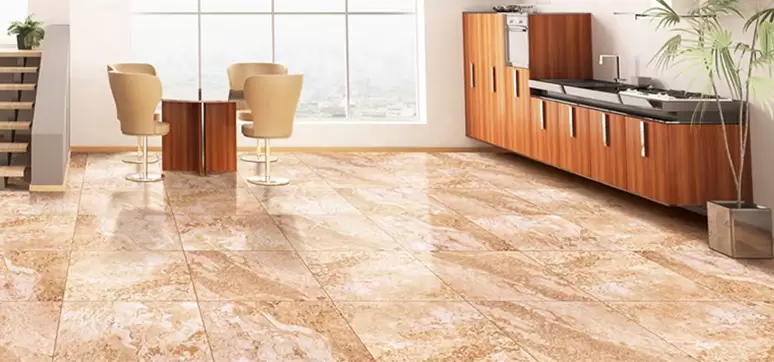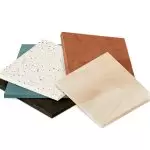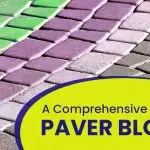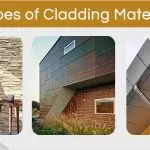When it comes to choosing flooring options for your home or office, vitrified tiles have gained significant popularity in recent years. Renowned for their durability, aesthetics, and easy maintenance, vitrified tiles offer a range of advantages. However, it is important to consider both the pros and cons before making a decision. In this blog, we will explore the advantages and disadvantages of vitrified tiles and delve into the different types available in the market.
Post your Requirement
The advantages and disadvantages of vitrified tiles are –
-
Durability:
Vitrified tiles are extremely durable, making them suitable for high-traffic areas. They are resistant to scratches, stains, and fading, ensuring a long-lasting flooring solution.
-
Aesthetic Appeal:
Vitrified tiles come in a wide array of colors, designs, and finishes, allowing you to choose the perfect style to complement your space. Whether you prefer a sleek, contemporary look or a classic, elegant design, vitrified tiles offer versatility.
-
Low Maintenance:
One of the significant advantages of vitrified tiles is their low maintenance requirements. They are resistant to moisture, making them easy to clean and maintain. Regular sweeping and occasional mopping are sufficient to keep them looking pristine.
-
Stain Resistance:
Vitrified tiles have a non-porous surface, which makes them highly resistant to stains. This quality is especially beneficial in areas prone to spills, such as kitchens or dining spaces.
-
Cost-effective:
Compared to other premium flooring options, vitrified tiles offer excellent value for money. They provide durability, aesthetics, and ease of maintenance at a relatively affordable price point.
Disadvantages of Vitrified Tiles:
-
Slippery Surface:
Vitrified tiles, especially glossy finishes, can be slippery when wet. It is crucial to choose tiles with anti-skid properties, especially for areas prone to moisture, such as bathrooms or swimming pool surroundings.
-
Installation Challenges:
Vitrified tiles require professional installation due to their weight and precision requirements. Improper installation can lead to issues like uneven surfaces or cracked tiles. Therefore, it is essential to hire experienced tile installers.
-
Cold Surface:
Vitrified tiles tend to retain the temperature of the surroundings, which can make them feel cold, especially in cooler climates. This can be mitigated by using underfloor heating systems or by placing rugs and carpets in certain areas.
Types of Vitrified Tiles:
Vitrified Tiles are composed of quartz, silica, clay, and feldspar. These materials are combined together with the process of vitrification. The tiles are manufactured by the Hydraulic press method.
Vitrified tiles could be segregated into various types depending upon the manufacturing process. They can be classified into –
-
Full Body Vitrified Tiles:
These tiles have a homogeneous composition, meaning the design and color run through the entire tile thickness. They are highly durable and suitable for heavy usage areas.
-
Glazed Vitrified Tiles (GVT):
Glazed vitrified tiles feature a layer of glaze on the surface, providing a wide range of design options. GVT tiles are known for their vibrant colors, patterns, and glossy finishes.
-
Double Charged Vitrified Tiles (DCVT):
DCVT tiles are created by applying a double layer of pigment to the surface, resulting in enhanced durability and color richness. They are commonly used in commercial spaces with high footfall.
-
Soluble Salt Vitrified Tiles (SSVT):
SSVT tiles are known for their affordability and are often used in residential projects. These tiles have a design printed on the surface and are subsequently coated with a layer of glaze.
Applications of Vitrified Tiles
Advantages of Double Charge Vitrified Floor Tiles
Vitrified tiles have a wide range of applications due to their versatility and durability. Here are some common applications of vitrified tiles:
-
Residential Flooring:
Vitrified tiles are extensively used for flooring in residential spaces such as living rooms, bedrooms, kitchens, and bathrooms. They offer a wide range of designs, colors, and finishes to suit different interior styles and preferences.
-
Commercial Spaces:
Vitrified tiles find widespread usage in commercial spaces including offices, hotels, restaurants, retail stores, and shopping malls. Their durability and easy maintenance make them ideal for high-traffic areas.
-
Outdoor Areas:
Certain types of vitrified tiles, such as outdoor or anti-skid variants, are specifically designed for outdoor applications. They are commonly used for patios, balconies, terraces, and garden pathways, providing a durable and aesthetically pleasing flooring solution.
-
Wall Cladding:
Vitrified tiles are not limited to flooring applications. They can also be used as wall cladding materials, adding a touch of elegance and style to interior and exterior walls. Vitrified tiles on walls can create a cohesive and seamless design when paired with the flooring.
-
Swimming Pools:
Vitrified tiles with anti-skid properties and resistance to water and chemicals are often employed for swimming pool areas. They provide a safe and visually appealing surface around the pool.
-
Commercial Kitchens:
The stain-resistant and easy-to-clean nature of vitrified tiles make them suitable for commercial kitchen flooring. They can withstand heavy-duty usage, grease, and spills common in restaurant kitchens.
-
Institutional Buildings:
Vitrified tiles are commonly used in schools, colleges, hospitals, and other institutional buildings. Their durability, hygiene, and ease of maintenance make them a practical choice for such facilities.
-
Showrooms and Exhibitions:
Vitrified tiles are often preferred in showrooms and exhibition spaces due to their ability to enhance product displays. Their attractive finishes and design options help create a visually appealing environment.
-
Airports and Transportation Hubs:
Vitrified tiles can withstand heavy footfall and rolling loads, making them suitable for airport terminals, train stations, and bus depots. They provide a durable and aesthetically pleasing flooring solution in such high-traffic areas.

Conclusion
Vitrified tiles offer numerous advantages such as durability, aesthetic appeal, and low maintenance, making them a popular choice for flooring. However, it is important to consider the disadvantages, such as slipperiness and cold surface, and choose appropriate types of vitrified tiles for specific areas. By weighing the pros and cons, you can make an informed decision that aligns with your needs and preferences, ensuring a beautiful and functional flooring solution for your space.























Post A Comment